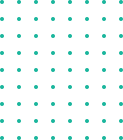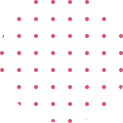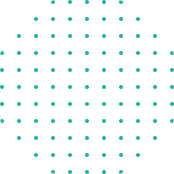The main objective of final year projects in the course curriculum is to encourage students to apply their theoretical knowledge to practical use. Working on final year projects allows students to gain practical knowledge and skills to solve real-world engineering and business problems.
Students can choose their final year projects based on their interest and specialization areas to acquire complete knowledge and build skills in that domain.
IEEE Final year projects Ideas(IEEE Based Projects), based on software and hardware. The final year of a Engineering either BE,BTECH,MTECH course is one of the most decisive stages of your education for professional career development. Final year projects for Computer Science and Engineering (CSE), Computer Engineering (CE)/Computer Science (CS), Information science and Technology (ISE), Electrical and Communication Engineering (ECE) and EEE students ,it is a great opportunity to build hands on practical knowledge which is vital for their career.
Top B.E Final Year Project Ideas and Topics 2023
1) Car to Car Communication based on GPS and WI-FI
This Project proposes a vehicle-to-vehicle communication protocol for cooperative collision warning. Emerging wireless technologies for vehicle-to-vehicle (V2V) and vehicle to-roadside (V2R) communications such as DSRC (Dedicated Short Range Communications) are promising to dramatically reduce the number of fatal
roadway accidents by providing early warnings.
One major technical challenge addressed in this Project is to achieve low-latency in delivering emergency warnings in various road situations. Based on a careful analysis of application requirements, we design an effective protocol, comprising congestion control policies, service differentiation mechanisms and methods for emergency warning dissemination. Simulation results demonstrate that the proposed protocol achieves low latency in delivering emergency warnings and efficient bandwidth usage in stressful road scenarios
2) Implementation OF Real Time Passenger Information System Using GPRS (RTPIS)
RTPIS provides travel information to passengers and tourists enabling them to make informed decisions about modes, routes and departure times. The RTPIS framework can be broadly divided into two contexts:
(1) Pre-trip context and
(2) On-trip context. Pre-trip context
The former provides information like timings, fares and routes well before the commencement of travel, through the Internet or the Short Messaging Service (SMS). The Ontrip context: - provides information like location and places of interest (POI) while on the move. This is achieved using on-board and at-stop terminals (displays and audio announcement units).
3) Advanced Vehicle Control Systems (AVCS)
AVCS are tools and concepts that enhance the driver’s control of the vehicle to make travel safer and more efficient. For example, in vehicle collision warning systems alert the driver to a possible imminent collision. In more advanced AVCS applications, the vehicle could automatically break or steer away from a collision, based on input from sensors on the vehicle.
Both systems are autonomous to the vehicle and can provide substantial benefits by improving safety and reducing accident induced congestion. The installation of high tech gadgets and processors in vehicles allow incorporation of software applications and artificial intelligence systems that control internal operations, ubiquitous computing, and other programs designed to be integrated into a greater transportation system.
4) Advanced Public Transportation System APTS/ Intelligent Transport System
One application implemented in APTS area is GPS vehicle tracking system in public transport buses (Bangalore, Chennai, Indore) to monitor vehicle routing and frequency .so that passengers do not have to wait long hours for a bus.
The objective is to provide Global Positioning System based passenger information system to help passengers utilize their waiting time at bus stops more efficiently as well as to reduce the uncertainty and associated frustrations. Display boards with high quality light emitting diode in wide-view angle are provided at bus stops so that passengers can read the information.
It displays the number and destination of the approaching bus, expected time of arrival, and messages of public interest. Even SMS Alert is provided to the Ticket reserved passengers from Main server Applies state-of-art transportation management and information technologies to public transit systems to enhance efficiency of operation and improve safety.
It includes real-time passenger information systems, automatic vehicle location systems, bus arrival notification systems, and systems providing priority of passage to buses at signalized intersections (transit signal priority).
5) Multipoint Wireless Data Acquisition System for Smart Vehicle
In data acquisition mode ARM-7 microcontroller acquires and stores different parameter of car. The main block of Wireless Data Acquisition System for Vehicles is ARM-7 micro controller which is heart of the WDASV which provides monitoring and controlling actions. It senses signals from input blocks and processes output blocks.
The software program is stored in ARM-7 microcontroller on chip memory, according to which it provides the controlling actions. The on chip ADC converts these parameters into digital form and gives to the ARM-7 microcontroller.
The status of door status i.e. whether the door is opened or closed is sensed by door status block and gives the corresponding signal to micro-controller. The speed of the vehicle is sensed by the speed sensor and this speed is measured in RPM by ARM-7 microcontroller. With the help of keyboard block the driver can enter the password along with cabin temperature.
The LCD block is provided for visual display of the message and password. Also it continuously displays the measured parameters. The RTC provides real time clock depending on which the various events occur. Whenever accident takes place the accident interrupt block gives interrupt to the ARM-7 microcontroller. Through serial communication block the WDASV is interfaced the PC. With this interfacing the stored data is transferred serially to PC, for the analysis purpose.
6) Microcontroller based anesthesia machine
In the hospitals when any major operation is performed, the patient must be in anesthetize condition. If the operation lasts for a long time, say for suppose for 5 or 7 hours, complete dose of anesthesia cannot be administered in a single stroke. It may lead to the patient’s death. If lower amount of anesthesia is administered, the patient may get up in midst to avoid this, the anesthetist administers few milliliters of anesthesia per hour to the patient.
If the anesthetist fails to administer the anesthesia to the patient at the particular time interval, other Allied problems may arise. To overcome such hazardous problems the design of an automatic operation of an anesthesia machine based on a micro-controller is effective. In this system provided syringe infusion pump along with the microcontroller.
The anesthetist can set the level of anesthesia in terms of milliliters per hour to administer anesthesia to the patient. After receiving the signal from the temperature sensor heart beat sensor and respiration sensor , the microcontroller controls the signal to the desire level and fed into the stepper motor to drive the infusion pump in proper manner.
The anesthesia is administered to the patient according to the stepper motor rotation.This particular paper will be very much useful to physicians to see the current position of anesthesia of the patients. If the level of anesthesia is decreased to lower level (set value), the alarm will be initiated to alert the physician to refill the anesthesia in the Syringe Pump to continue the process
7) Smart Voting System through Facial Recognition
Facial recognition is a category of biometric software which works by matching the facial features. We will be studying the implementation of various algorithms in the field of secure voting methodology. There are three levels of verification which were used for the voters in our proposed system. The first is UID verification, second is for the voter card number, and the third level of verification includes the use of various algorithms for facial recognition. In this paper, we will provide a comparative study between these algorithms, namely: Eigenface, Fisher Face & SURF
8) Controlling applications with hand gestures using sixth sense prototype / wear your world using sixth sense technology
SixthSense is a wearable, gestural interface that augments our physical world with digital information, and lets us use natural hand gestures to interact with that information. SixthSense brings intangible, digital information into the tangible world, and allows us to interact with this information via natural hand gestures.
SixthSense frees information from its confines, seamlessly integrating it with reality, thus making the entire world your computer. The SixthSense prototype comprises a pocket projector, mirror, and camera worn in a pendant-like mobile device.
Both the projector and the camera are connected to a mobile computing device in the user’s pocket. The system projects information onto the surfaces and physical objects around us, making any surface into a digital interface; the camera recognizes and tracks both the user's hand gestures and physical objects using computer-vision-based techniques.
SixthSense uses simple computer-vision techniques to process the video-stream data captured by the camera and follows the locations of colored markers on the user’s fingertips (which are used for visual tracking). In addition, the software interprets the data into gestures to use for interacting with the projected application interfaces.
The current SixthSense prototype supports several types of gesture-based interactions, demonstrating the usefulness, viability, and flexibility of the system. The current prototype system costs approximately $350 to build.
9) Quadcopter Model Q1
We one of the best models available and all tested for its working.CITL-TECH Varsity in Bangalore offers the best training and model building workshops to all the hobbyists,engineering students who are interested in developing the moules.now we have released the GPS based quadcoptors where it is having the feature of auto return home .A quadcopter, also called a quadrotor helicopter, quadrocopter, quadrotor,is a multicopter that is lifted and propelled by four rotors.
10) FPGA Implementation of Sine and Cosine Value Generators using Cordic Algorithm for Satellite Attitude Determination and Calculators
Now-a-days various Digital Signal Processing systems are implemented on a platform of programmable signal processors or on application specific VLSI chips. Coordinate Rotation DIgital Computer (CORDIC) algorithm has turned out to be such kind of programmable signal processor. In recent times, it has been a widely researched topic in the field of vector rotated Digital Signal Processing (DSP) applications due to its simplicity.
This paper presents the design of pipelined architecture for coordinate rotation algorithm for the computation of loop performance of complex Digital Phase Locked Loop (DPLL) in In-phase and quadrature channel receiver. The design of CORDIC in the vector rotation mode results in high system throughput due to its pipelined architecture where latency is reduced in each of the pipelined stage. For on-chip application, the area reduction in proposed design can is achieved through optimization in the number of micro rotations. For better loop performance of first order complex DPLL and to minimize quantization error, the numbers of iterations are also optimized.
11) Design and Implementation of CORDIC Processor for Complex DPLL
This paper presents an area-time efficient CORDIC algorithm that completely eliminates the scale-factor. By suitable selection of the order of approximation of Taylor series the proposed CORDIC circuit meets the accuracy requirement, and attains the desired range of convergence. Besides we have proposed an algorithm to redefine the elementary angles for reducing the number of CORDIC iterations.
A generalized micro-rotation selection technique based on high speed most-significant-1-detection obviates the complex search algorithms for identifying the micro-rotations. The proposed CORDIC processor provides the flexibility to manipulate the number of iterations depending on the accuracy, area and latency requirements. Compared to the existing recursive architectures the proposed one has 17% lower slice-delay product on Xilinx Spartan XC2S200E device.
12) Approach lightning system/pilot controlled lightning at airport runway for energy conservation
Pilot Controlled Lighting (PCL), also known as Aircraft Radio Control of Aerodrome Lighting (ARCAL) or Pilot Activated Lighting (PAL), is a system which allows aircraft pilots to control the lighting of an airport or airfield's approach lights, runway edge lights, and taxiways via radio. At some airfields, the aerodrome beacon may also be ARCAL controlled. ARCAL is most common Anton or little-used airfields where it is neither economical to light the runways all night, nor to provide staff to turn the runway lighting on and off.
It enables pilots to control the lighting only when required, saving electricity and reducing light pollution. The ARCAL frequency for most aerodromes is usually the same as the UNICOM/CTAF frequency, although in some rare cases, a second ARCAL frequency may be designated to control the lighting for a second runway separately (an example of this is runway 01/19 at the airport in Sydney, NS).
To activate the lights, the pilot clicks the radio transmit switch on the ARCAL frequency a certain number of times within a specified number of seconds. There are two type of ARCAL systems, type J and type K. When either type of system is activated, a 15-minute countdown starts, after which the lights turn off. While the lights are on, whenever a lighting command is issued, whether it changes the lighting intensity or not, the 15-minute countdown is reset.
At some airfields, the lights may flash once to warn pilots that the lights are about to go off, before turning off two minutes later. When using ARCAL, it is strongly recommended that aircraft on final approach to the airfield issue a fresh lighting command, even if the lights are already on (especially if the lights were activated by another aircraft). This is so that the lighting does not turn off at a critical moment (such as when crossing the runway threshold)
13) Electronic Toll Collection (ETC)
The Electronic Toll Collection (ETC) is designed to determine if a car is registered in a toll payment program,alert enforcers of toll payment violations, and debit the participating account. With ETC, these transactions can be performed while vehicles travel at near highway cruising speed. ETC is fast becoming a globally accepted method of toll collection, a trend greatly aided by the growth of interoperable ETC technologies.
Technologies used in ETC are Automatic Vehicle Identification (AVI), Automatic Vehicle Classification (AVC), Video Enforcement Systems (VES) and Vehicle Positioning System (VPS).ETC systems are deployed in the following cities in India: Delhi, Mumbai, Kolkata, and Chennai.
14) Eye ball Sensor for automatic Wheel Chair for paralyzed patients
This intelligent chair is designed to help the paralysed person who moves on a wheel chair, instead of the handicapped person moves the wheel chair by his hand, the chair will automatically move to a particular direction as the patient moves his eyes towards a direction, with the help of Eye ball movement detection sensor. The chair will also sense the obstacles in front of it and gives a beep sound.
15) A New Approach for High Performance and Efficient Design of CORDIC Processor
This paper presents a new approach for the high performance and hardware efficient design of coordinate rotation digital computer (CORDIC) processor structure. The proposed design approach completely eliminates the ROM requirement of constant arctangent values.
Furthermore, efficient designs of carry look ahead adders (CLAs), exploiting one input as constant, in the angle adder/subtractor data path speeds-up the computation while maintaining regularity. The proposed architecture is implemented in FPGA as well as in 180nm standard cell library. The proposed implementation has about 39% delay improvement in FPGA and about 34% delay improvement in standard cell technology as compared to basic structure. About 47% power savings has been achieved in the proposed structure.
16) Design of Plural-Multiplier Based on CORDIC Algorithm for FFT Application
CORDIC plural-multiplier is the key module to affecting the speed and accuracy of FFT processor. Considering these demands, the problem of CORDIC algorithm is discussed in detail and the according optimization methods are given in this paper. Then, the hardware pipe-lining structure of the CORDIC multiplier is put forward. Comparison results about RTL simulation results with MATLAB calculation indicate that the design is feasible and practical.
17) Eye ball Sensor for automatic Wheel Chair for paralyzed patients
This intelligent chair is designed to help the paralysed person who moves on a wheel chair, instead of the handicapped person moves the wheel chair by his hand, the chair will automatically move to a particular direction as the patient moves his eyes towards a direction, with the help of Eye ball movement detection sensor. The chair will also sense the obstacles in front of it and gives a beep sound.
18) Hardware Efficient Architecture for Generating Sine/Cosine Waves
This paper presents a hardware efficient architecture for generating sine and cosine waves based on the CORDIC (Coordinate Rotation Digital Computer) algorithm. In its original form the CORDIC suffers from major drawbacks like scale-factor calculation, latency and optimal selection of micro-rotations.
The proposed algorithm overcomes all these drawbacks. We use leading-one bit detection technique to identify the microrotations. The scalefree design of the proposed algorithm is based on Taylor series expansion of the sine and cosine waves. The 16-bit iterative architecture achieves approximately 4.5% and 6.7% lower slice-delay product as compared to the other existing designs. The algorithm design and its VLSI implementation are detailed.
19) Error Detection in Majority Logic Decoding of Euclidean Geometry Low Density Parity Check (EG-LDPC) Codes
In a recent paper, a method was proposed to accelerate the majority logic decoding of difference set low density parity check codes. This is useful as majority logic decoding can be implemented serially with simple hardware but requires a large decoding time. For memory applications, this increases the memory access time.
The method detects whether a word has errors in the first iterations of majority logic decoding, and when there are no errors the decoding ends without completing the rest of the iterations. Since most words in a memory will be error-free, the average decoding time is greatly reduced. In this brief, we study the application of a similar technique to a class of Euclidean geometry low density parity check (EG-LDPC) codes that are one step majority logic decodable. The results obtained show that the method is also effective for EG-LDPC codes. Extensive simulation results are given to accurately estimate the probability of error detection for different code
sizes and numbers of errors.
Get Project Hands-on Experience with Source Code
- Cost: ₹ 5000 - ₹ 12000
- Total Slot: 100
- Booked Slot: 86
-
-
Related Project List for BE Final Year Students
-
1) Final year projects for CSE Students
2) Python Final year Projects
a) Python Machine Learning Projectsb) Python Artificial Intelligence CSE Projects
c) Python Data Science CSE Projects
d) Python Open CV CSE projects
e) Python Machine Learning CSE Projects
f) Python Django Projects CSE projects
g) Python Biomedical Projects CSE Projects
h) Python Image Processing / Video Processing CSE Projects
3) Java Final year Projects
a) Java Cloud Computing Final year Projectsb) Java Big Data Final year Projects
c) Java Networking & Network Security B.E Projects
d) Java Data Mining / Web Mining / Cyber Security Final year Projects
e) Java Wireless Sensor Network Final year Projects
f) Java Distributed & Parallel Networking B.E Projects
g) Java Mobile Computing B.E final year Projects
4) DotNet Final year Projects
a) DotNet Cloud Computing Projects for B.E final year project CSE Students
b) DotNet Network Security Final year projects
c) DotNet Wireless Sensor Network Projects for B.E Projects
d) DotNet Web Mining / Data Mining Projects for B.E Students
5) Android Projects Final Year Projects
a) Android GPS, GSM, Bluetooth & GPRS B.E Projects
b) Android projects for ece final year students Embedded System Application Projects for B.E
c) Android Database Applications Projects for B.E Students
d) Android Cloud Computing Projects for Final Year B.E Students
e) Android Surveillance Applications B.E Projects
f) Android Medical Applications Projects for B.E
6) Projects for ECE final year students
a) Embedded Robotics Projects for M.tech Final Year ECE Students
b) Embedded IEEE Internet of Things Final year projects for ECE
c) Embedded Raspberry PI Final year Projects
d) Embedded Automotive Final year Projects for ECE
e) Embedded Biomedical Final year Projects
f) Embedded Biometric Projects for B.E Final Year ECE Students
g) Embedded Security Projects for B.E Final Year
7) VLSI Projects for B.E Students
a) VLSI Digital Signal Processing Projects for B.E
b) VLSI Arithmetic Core And Digital Electronics B.E Projects
c) VLSI Digital Communication & Information Theory for B.E
d) VLSI Network Security & Cryptographic Sciences B.E Projects
e) VLSI Digital Image Processing Project for B.E Final Year
8) Quadcopter Projects for B.E Students
a) Quadcopter Model Q1 Project for B.E Students
b) Quadcopter Model Q2 Project for B.E Students
c) MatLab Final year Projects
d) Matlab Image Processing Final year Projects
e) MatLab Wireless Communication Final year Projects
f) MatLab Communication Systems Final year Projects
g) MatLab Power Electronics Projects for B.E Students
h) MatLab Signal Processing Projects for B.E
i) MatLab Geo Science & Remote Sensors B.E Projects
j) MatLab Biomedical Projects for B.E Students
9) Simmulation Projects for B.E final year Students
a) Simmulation Wireless Sensor Network Projects for B.E
b) Simmulation Mesh Network Final Year B.E Projects
c) Simmulation Mobile Computing Final Year Projects for B.E
d) Simmulation Vehicular Technology Final Year B.E Projects












